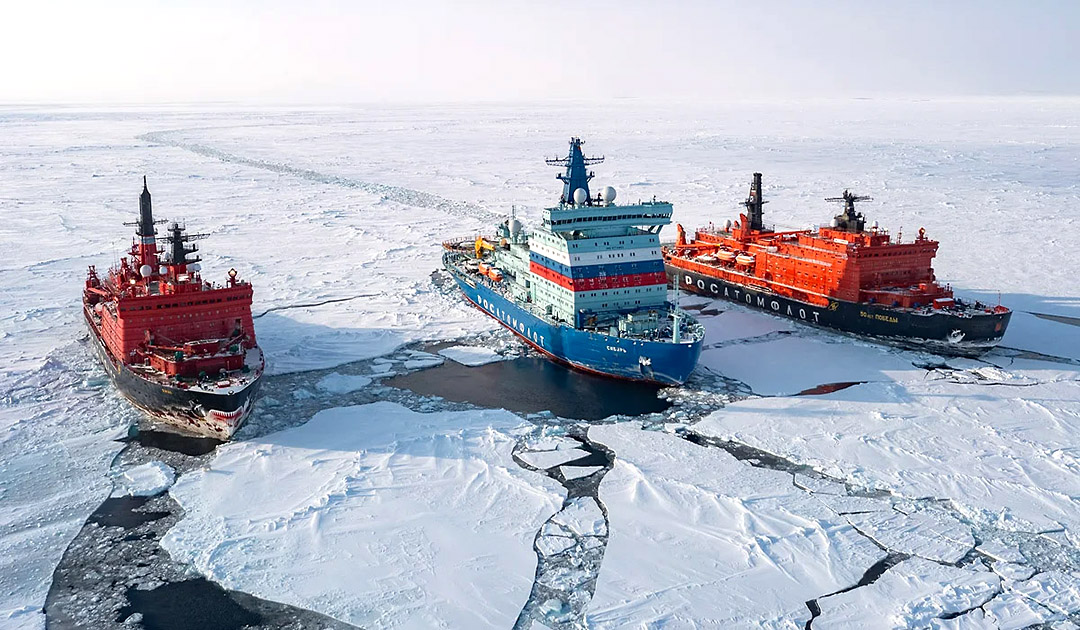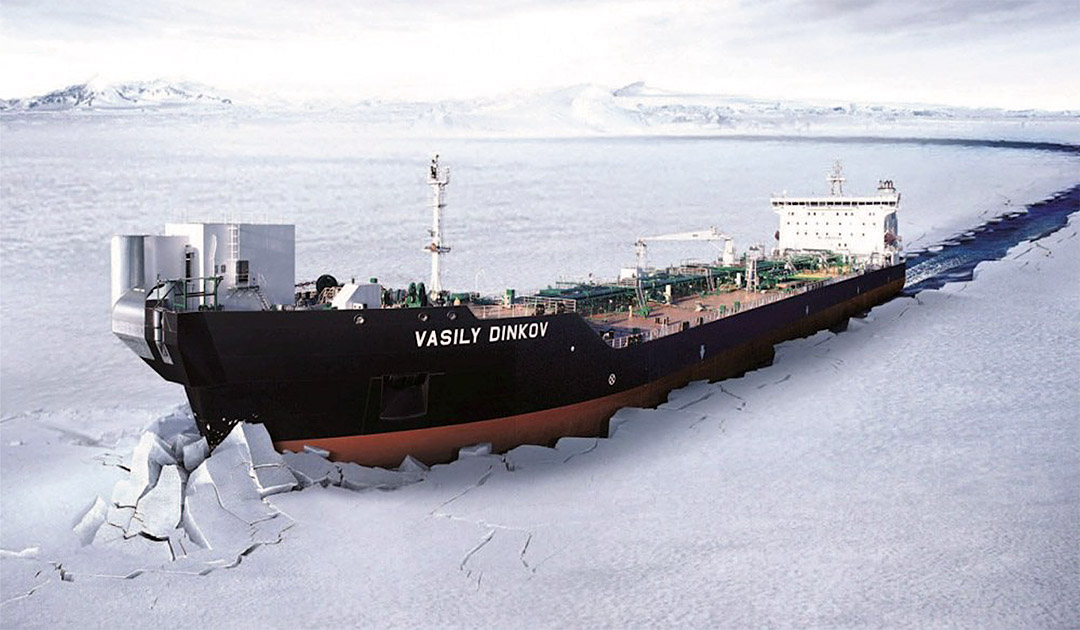
Sanctions have prohibited the import of Russian oil from the Arctic to the EU area. Since the sanctions took effect in December 2022, Russia has diverted crude oil produced at its three Arctic projects, Prirazlomnoye, Novy Port and Varandey, via the Suez Canal to buyers in Asia. This means a long and costly way to the customers and a corresponding additional effort. Now Rosatom offered oil companies to divert some of the cargo along the Northern Sea Route (NSR). Oil is to be carried on conventional tankers, without ice class, under escort of icebreakers.

However, the long route, compared to the relatively short transport distance to Western Europe, calls into question the economic viability of the projects. An alternative is the Northern Sea route. According to Rosatom’s calculations, up to 500,000 tons of crude oil could be transported to Asia along the NSR in late summer and early fall, when ice extent is at its lowest.
Rosatom’s representative in the Federation Council spoke about this at the round table “Transport Potentials of the Northern Sea Route”. The talks were about the fields “Varandey” (Lukoil) and “Prirazlomnoye” (Gazprom Neft), which are located outside the NSR. For the first field, the freight base is estimated at 5.9 million tons, and for the second at 3.6 million tons.
“Previously, our voyages were heading west, but now we have had preliminary negotiations about the direction of some of these cargo flows to the east. We are, of course, focusing on the time of shipping and the use of tankers. Unfortunately, we do not yet have a large number of ice-class tankers, so we offer our colleagues the use of conventional tankers with guaranteed safety using our icebreakers in summer-autumn shipping,” quotes the analysis agency PortNews the head of Rosatom project office on Arctic development Sergey Chemko.

Russia bought used oil tankers
Russian crude oil was largely transported by tankers owned by Western shipping companies before the sanctions imposed by the West. However, these companies, as well as their insurance companies, must fear penalties if Russian oil is transported.
Russia’s plans for a greater flow of Arctic crude to Asia are a direct result of Western sanctions, experts confirm. Russia recently purchased more than 100 oil tankers to circumvent Western sanctions. These purchases also indicate more upcoming activity on the Northern Sea Route.
According to the report, experts speak of a shadow fleet that Russia has assembled. But safety is also a concern. It is believed that part of the fleet consists of vessels older than 15 years, the age at which the major oil companies normally withdraw them from service due to wear and tear.
The used tankers are also without ice class and in many cases of average quality. It is also doubtful whether the tankers comply with the Polar Code.
The fear is that all these old ships were probably not maintained as they should have been. The probability of a major leak or accident increases day by day as the fleet grows.
Heiner Kubny, PolarJournal





